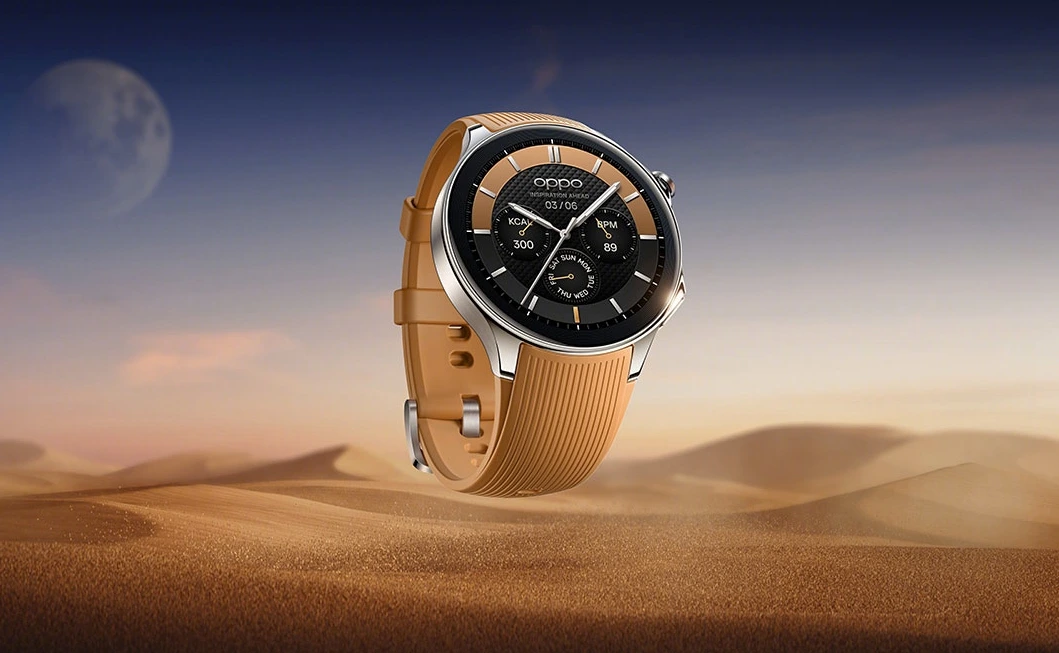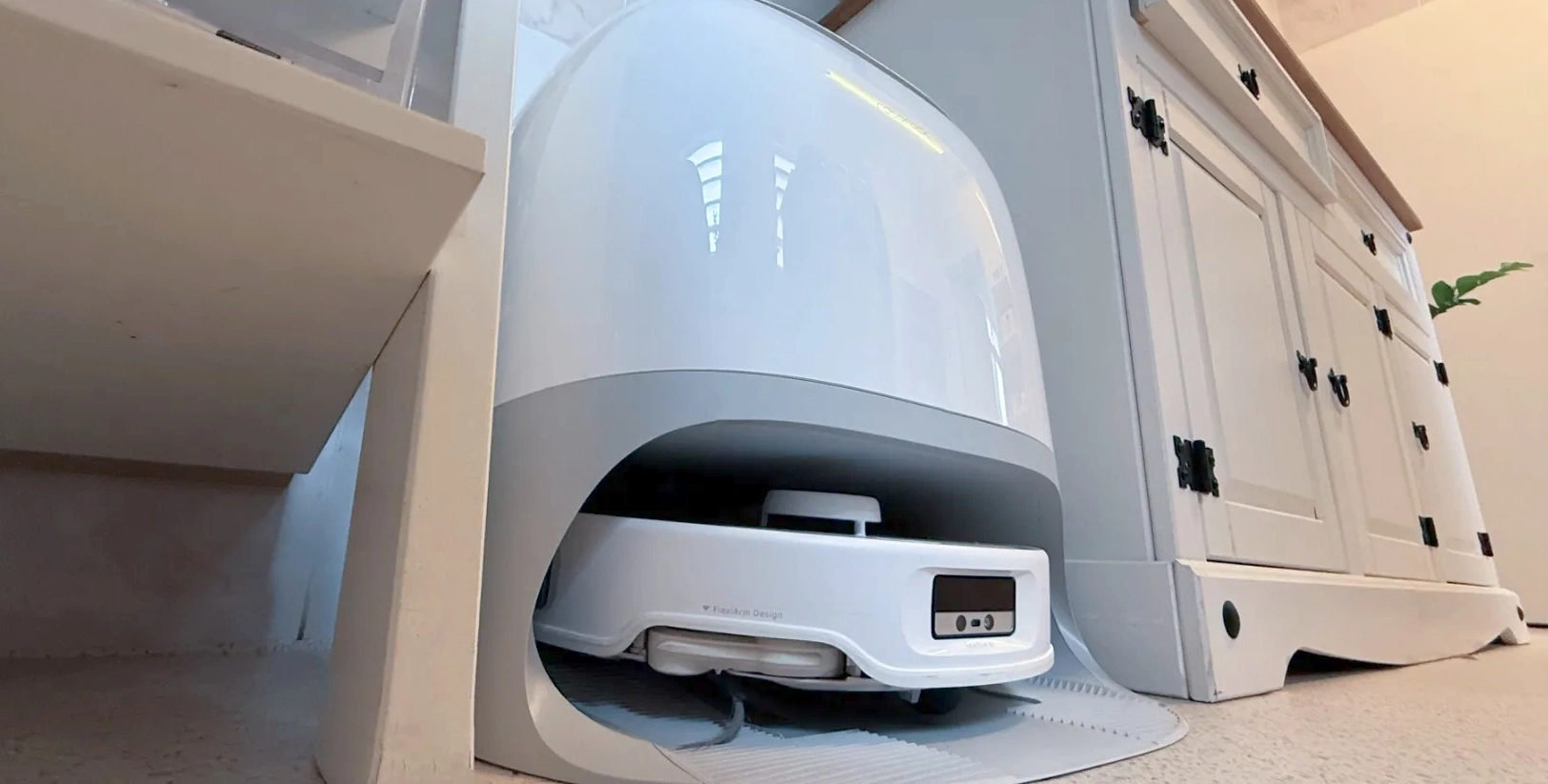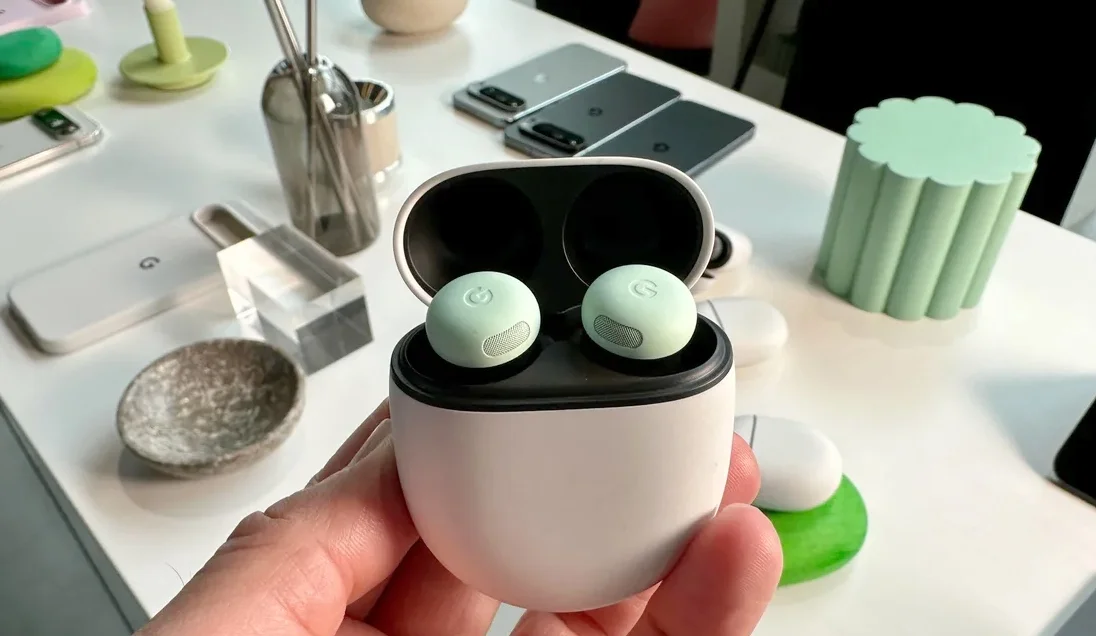Noise-Canceling Earbuds Without Silicone Tips? Apple Has Delivered for Those Who Can’t Stand In-Ear Earbuds with the AirPods 4 with Active Noise Cancellation
When it comes to in-ear earbuds—those you insert into your ear canal, usually as button or stem designs—there are generally two types of people: those who find silicone-tipped earbuds comfortable and those who don’t. That’s why the new AirPods 4 are excellent news for the latter group.
The arrival of the AirPods 4 brings a surprise from Apple that no one expected—a version with active noise cancellation. I’ve tested this model for several weeks, and here’s my in-depth review and opinion.
The AirPods are one of Apple’s biggest business successes, as well as one of its most iconic, recognizable products. They carry a certain social status with them, thanks to their unmistakable white design. Apple has to maintain this product line with great care.
Here are my conclusions after a couple of weeks with the AirPods 4 with active noise cancellation—a surprise, without a doubt, though it may or may not be what you’re looking for.
The More They Resemble the AirPods Pro, the Better

One of the benefits of the AirPods 4 is that their design is increasingly indistinguishable from the AirPods Pro. However, compared to the AirPods 3, the difference is noticeable.
The earbud’s rounded section has a different angle and size. Additionally, the sensors are smaller, and the mesh covering the air vents at the top has been repositioned. The design is distinct, even when compared to the AirPods Pro.
But the most important thing about the AirPods 4 design is this: they’re intended for people who can’t use silicone-tipped earbuds, traditionally found in noise-canceling models.
Apple claims to have studied a wide range of ear shapes to develop a design that fits as many people as possible. However, this approach only goes so far, as it’s impossible to create a single earbud design that fits everyone perfectly.
I usually wear first-generation AirPods Pro that I’ve used since their release. The silicone tip design works better for me as it offers a snug fit. So, these AirPods 4 have been a true test to see if this design suits my needs.
To my surprise, the AirPods 4 fit me well, and while they don’t provide the same secure fit as the Pro models or other silicone-tipped earbuds like the Nothing Ear or Pixel Buds Pro 2, they don’t fall out, even when I move my head around.
But here comes the real test: comfort after several hours of use. For me, these AirPods 4 are slightly less comfortable than the Pros because they press more on the ear canal. Of course, this is subjective, as comfort in earbuds varies by individual preference. Despite being comfortable, I find a couple of hours of wear sufficient.
The charging case is a pleasant surprise. It’s smaller than the AirPods Pro case and includes all the upgrades from the AirPods Pro 2 case, such as compatibility with Apple’s Find My system, a speaker that emits sound to help locate them, and Qi wireless charging, compatible with Apple Watch magnetic chargers.
These are typical “Apple being Apple” touches—the ability to charge them with an Apple Watch charger may not seem significant until you try it. It’s one less USB-C cable to keep track of.
A New Way to Pair with Android Devices
One interesting, though minor, change is the new pairing method for AirPods 4 with non-Apple devices.
If you have an iPhone, Mac, or iPad, you can pair them by simply opening the case. Apple has removed the back button used to put the case into pairing mode. Now, to pair with other devices, place both earbuds in the case, open it, and double-tap the front of the case until the LED turns white.
Apple uses the earbuds’ motion sensors (gyroscopes) in the case to detect these two taps, which I find a unique touch that sets Apple apart from its competitors.
Good Sound, But Even Better Noise Cancellation
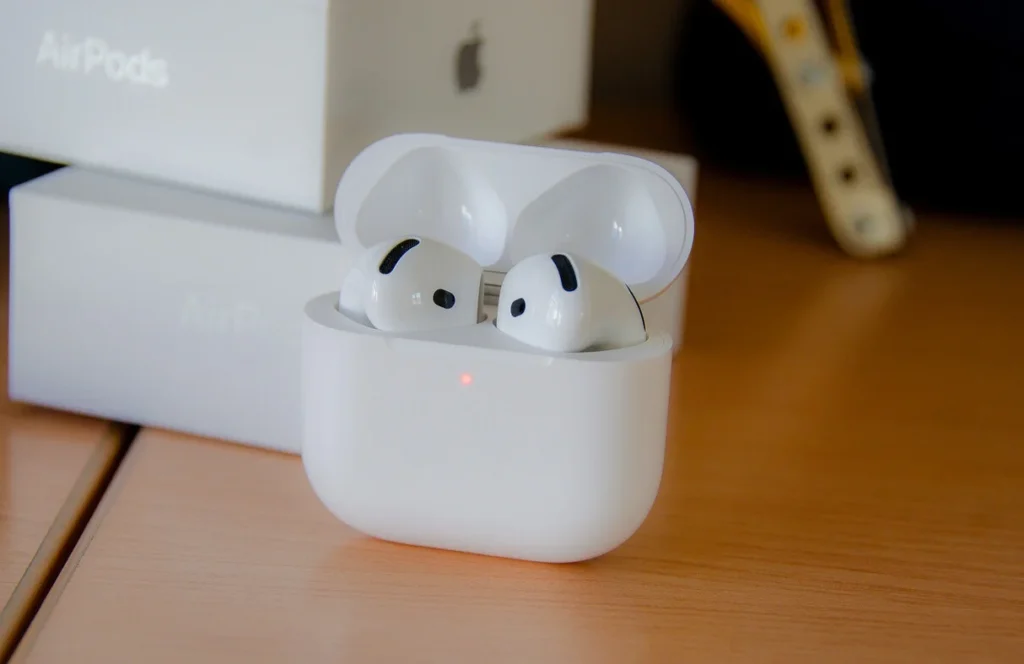
The sound quality of the AirPods 4 is quite good, provided you keep in mind that the experience will vary depending on the streaming service you use.
The AirPods 4 support SBC and AAC codecs. When listening to music on Spotify, a podcast, or watching a YouTube video, I have no complaints about audio quality. However, when you use Apple Music, you realize what you’re missing with lossless audio.
I’m not here to debate which streaming platform is better, but the quality improvement with Apple Music is significant. And when you add spatial audio, the virtual 5.1 sound really stands out in many songs.
I can’t say the AirPods 4 sound better than the AirPods Pro. This is especially noticeable with bass, which is richer in the Pros. This difference isn’t just because of the silicone tips, as the same holds true with transparency mode.
That said, these earbuds sound excellent for this type of model, offering audio quality that should satisfy most people.
Noise cancellation is surprisingly good for earbuds without silicone tips. They don’t reach the level of the AirPods Pro or high-end noise-canceling headphones, but they perform well.
I tested them in various environments with mixed results. For example, in an office with people talking on the phone, they’re not very effective. But on public transportation, they handle train noises well.
In a noisy city like Madrid, they noticeably reduce nearby traffic noise, although not as effectively as the AirPods Pro. They also reduce background noise from nearby conversations at normal volume.
The H2 Chip Makes a Difference in the “Affordable” AirPods
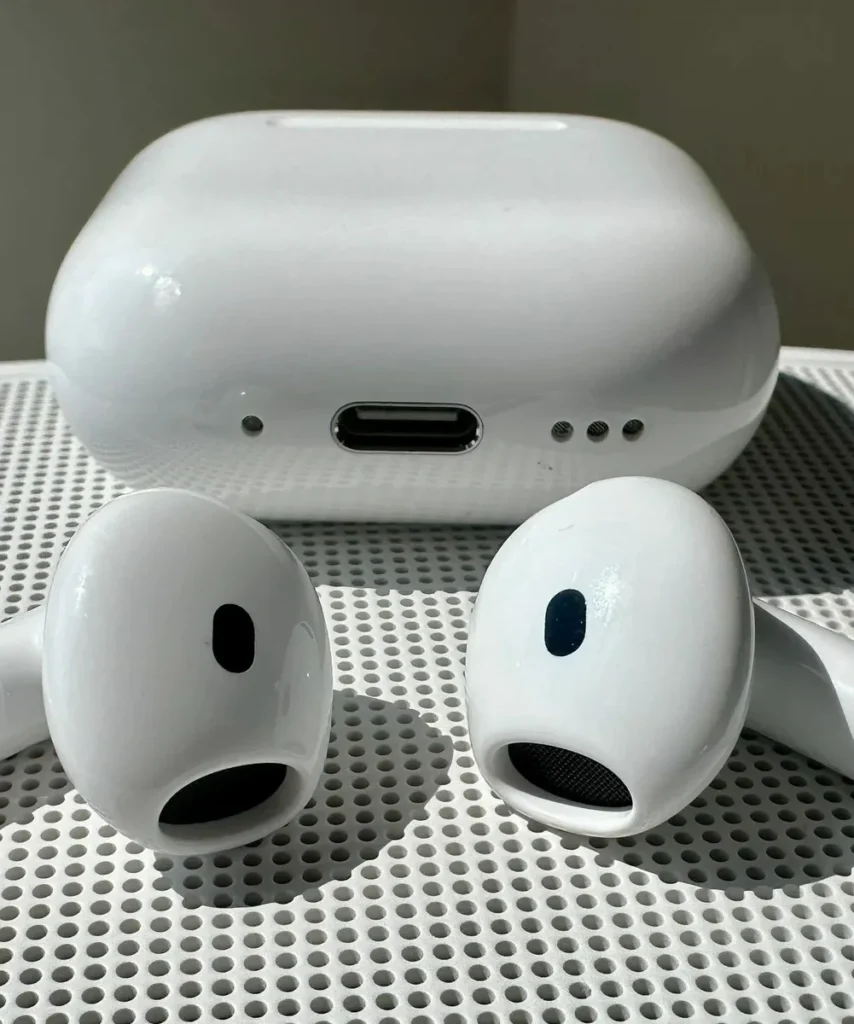
It’s fair to say that the AirPods 4—or really any AirPods model—aren’t very customizable. Apple includes AirPods 4 settings within iOS 18, where you can adjust several features, but not as deeply as many of us would like.
The AirPods settings menu is useful for customizing things like what happens when you tap the touch controls once or multiple times, such as answering a call, adjusting spatial audio, and a few other features.
It’s easier to adjust AirPods controls by holding down the volume than navigating through Settings.
Apple retains Bluetooth 5.3 connectivity, as with its latest AirPods models, but the more significant advancement is the addition of the H2 chip in the AirPods 4.
The H2 chip enables advanced features like voice isolation during calls, improved audio clarity, and new interactions with Siri that use head movements.
Siri interactions through head gestures are undoubtedly one of the best features of the AirPods 4. When Siri notifies you of a message or call, you can nod or shake your head to respond. It’s an extremely easy and hands-free way to answer calls when your hands are occupied.
A demo in the AirPods settings shows how it works. Activate the video audio to hear the response sounds as you move your head.
This feature is one of my favorites and is also available on the 2nd generation AirPods Pro.
Battery Life Exceeds Apple’s Stated Specs
Apple’s specs indicate that the AirPods 4 provide up to 4 hours of battery life with active noise cancellation enabled. While this isn’t particularly impressive—especially since most competitors with similar technology offer over 5 hours—my testing tells a different story.
In my tests, listening to music continuously at a volume between 50% and 75%, starting with a full battery, the AirPods 4 with active noise cancellation lasted 5 hours without issue.
This is decent battery life for earbuds of this type—not amazing, but solid. Additionally, the charging case adds up to 30 more hours of playback and supports quick charging, giving you 1 hour of use with just 5 minutes in the case.
Verdict: Are the AirPods 4 with Active Noise Cancellation Worth It?
The AirPods 4 with active noise cancellation are among the best buys if you want to block out external noise and can’t use silicone-tipped earbuds. Their compact design, battery life, and audio quality add to their appeal, but the fit and noise cancellation are the main points to consider.
Are they the best AirPods from Apple? It depends. At a price of 199 euros, and if noise cancellation isn’t a priority for you, the standard version is a better option at 149 euros. However, these will become even more attractive when Apple offers a discount.
The issue with the AirPods 4 is that the 2nd generation AirPods Pro are priced close to them, currently at 249 euros. For just 50 euros more, you get better battery life, superior sound quality, added comfort (if they suit your ears), the U1 chip for locating them with the Find My app, volume adjustment from the stem, and a sound amplifier for conversations.


